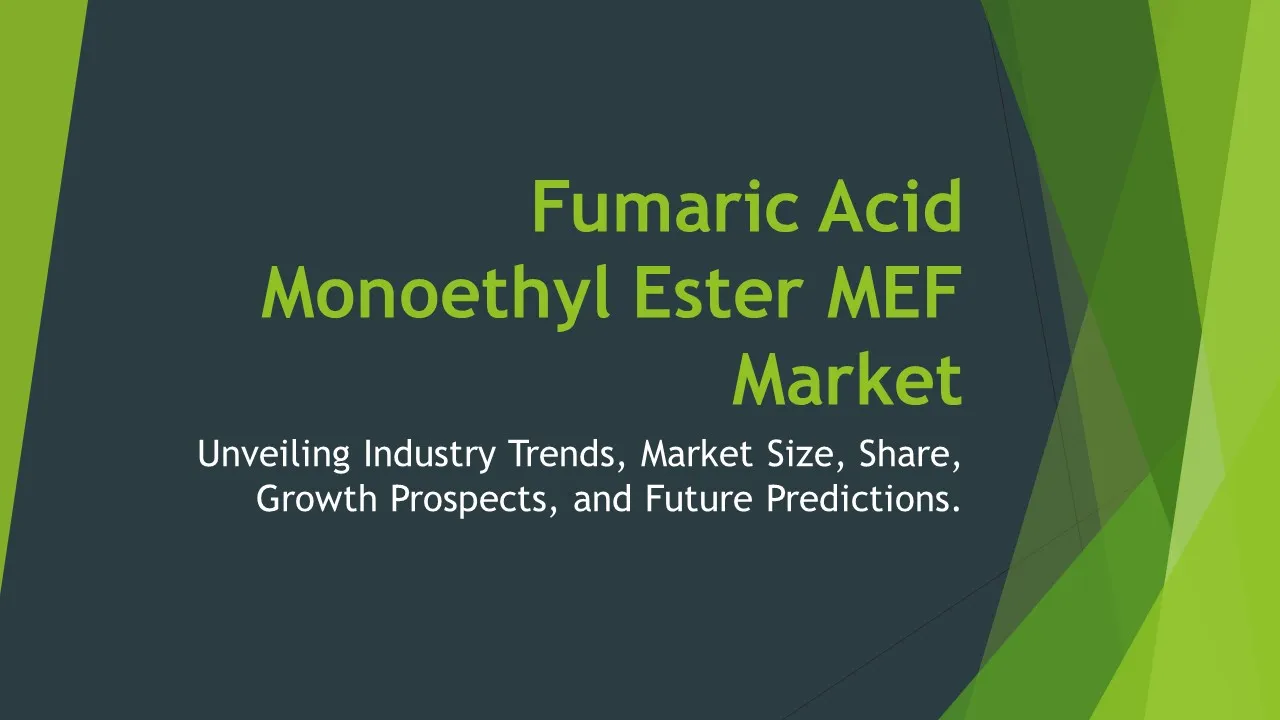Plastic Additive
Plastic Additive Market Segments - by Product Type (Flame Retardants, Antioxidants, Plasticizers, UV Stabilizers, Anti-Static Additives), Application (Packaging, Automotive, Construction, Consumer Goods, Agriculture), Distribution Channel (Direct Sales, Distributors, Online Retail), Ingredient Type (Polyethylene, Polypropylene, PVC, Polystyrene, PET), and Region (North America, Europe, Asia Pacific, Latin America, Middle East & Africa) - Global Industry Analysis, Growth, Share, Size, Trends, and Forecast
- Report Preview
- Table Of Content
- Segments
- Methodology
Plastic Additive Market Outlook
The global plastic additive market was valued at approximately USD 40 billion in 2022 and is projected to grow at a CAGR of around 5% from 2023 to 2030. This growth is driven by the increasing demand for high-performance plastic materials in various industries, including automotive, construction, and packaging. The rise in environmental awareness and the need for sustainable solutions have also contributed significantly to the market's expansion, leading manufacturers to innovate and develop eco-friendly additives that enhance the properties of plastics. Additionally, the growth in the end-user industries, particularly in emerging economies, has further propelled the demand for plastic additives, making it a dynamic and evolving market. The technological advancements in polymer production and the introduction of new additives to improve performance and durability are expected to bolster market growth. Furthermore, government regulations promoting recycling and the reduction of plastic waste are anticipated to influence market dynamics positively.
Growth Factor of the Market
The plastic additive market is experiencing significant growth due to several key factors. One of the primary drivers is the increasing demand for lightweight and durable materials in various applications, particularly in the automotive and aerospace industries, where performance and efficiency are crucial. Additionally, the growing trend towards sustainability is pushing manufacturers to develop additives that can enhance the recyclability of plastics, making them more appealing to environmentally conscious consumers and businesses. Moreover, the rapid industrialization and urbanization in emerging economies are leading to higher consumption of plastic products, thereby driving the demand for additives that improve the quality and longevity of these materials. Technological advancements in additive manufacturing and compounding processes are also playing a vital role, enabling the production of more sophisticated and tailored plastic materials. Lastly, the ongoing innovations in the formulation and functionality of plastic additives are creating new opportunities for market players to meet the evolving needs of various industries.
Key Highlights of the Market
- The global plastic additive market is projected to grow at a CAGR of around 5% from 2023 to 2030.
- Antioxidants and plasticizers are among the most widely used additives in the industry.
- The automotive sector accounts for a significant share of the plastic additive market due to increasing vehicle production.
- North America and Europe are the leading regions in terms of market share due to stringent regulations and high demand for advanced materials.
- Innovations in eco-friendly additives are expected to drive the future growth of the market as sustainability becomes a priority.
By Product Type
Flame Retardants:
Flame retardants are critical plastic additives used to enhance the fire resistance of plastic materials. Their importance has surged due to the increasing safety regulations and standards across various industries. These additives work by inhibiting ignition and slowing down the spread of flames, making them essential in applications such as construction, textiles, and electrical insulation. The growing awareness of fire safety in residential and commercial buildings is driving the demand for flame retardants. Additionally, the development of halogen-free alternatives is gaining traction, as these options are perceived to be more environmentally friendly and less hazardous, thus expanding their market presence in recent years.
Antioxidants:
Antioxidants play a vital role in improving the durability and longevity of plastic products by preventing oxidation that can lead to degradation of materials. They are particularly important in applications where plastics are exposed to extreme temperatures and environmental conditions. The rising demand for high-performance plastics in sectors such as automotive, consumer goods, and electronics is propelling the growth of the antioxidants segment. With manufacturers increasingly focusing on enhancing product life and performance, the adoption of advanced antioxidant formulations, including processing stabilizers and primary antioxidants, is on the rise. This trend is expected to continue as industries seek to optimize their product offerings and cater to consumer needs.
Plasticizers:
Plasticizers are essential additives that enhance the flexibility, workability, and softness of plastics, particularly polyvinyl chloride (PVC). The demand for plasticizers is primarily driven by their extensive use in the construction and packaging sectors, where flexibility is a critical requirement. The increasing use of flexible PVC in various applications, such as flooring, cables, and medical devices, is boosting the plasticizers market. Additionally, the shift towards bio-based plasticizers is gaining momentum, as manufacturers aim to meet the demand for more sustainable alternatives. This transition is not only addressing environmental concerns but is also opening new avenues for innovation and growth in the plasticizer segment.
UV Stabilizers:
UV stabilizers are crucial in protecting plastics from the harmful effects of ultraviolet radiation, which can lead to discoloration and degradation over time. The rise in outdoor applications, such as automotive exteriors, construction materials, and consumer goods, has significantly increased the demand for UV stabilizers. As industries continue to prioritize product longevity and aesthetic appeal, the adoption of advanced UV stabilization technologies is becoming more prevalent. Furthermore, the increasing focus on sustainable products is driving the development of non-toxic and eco-friendly UV stabilizers, which are expected to gain traction in the market. Companies are investing in research and development to create formulations that not only provide effective UV protection but also align with environmental standards.
Anti-Static Additives:
Anti-static additives are utilized to prevent the buildup of static electricity in plastic materials, which can be detrimental in various applications, particularly in the electronics and packaging industries. The growing demand for electronic devices and components, coupled with the need for safe transportation and handling of sensitive products, is propelling the anti-static additives market. These additives help improve the functionality and safety of plastic products by reducing the risk of static-related issues. The ongoing advancements in anti-static technology are leading to the development of more effective and versatile additives, which is further driving their adoption across various sectors.
By Application
Packaging:
The packaging segment is one of the largest consumers of plastic additives, driven by the need for improved barrier properties, flexibility, and durability in packaging materials. With the increasing demand for convenient and sustainable packaging solutions, manufacturers are turning to advanced plastic additives to enhance the performance of their products. Additives such as anti-static agents, UV stabilizers, and antioxidants play a crucial role in extending the shelf life of food and beverages, making them essential in the food packaging industry. Additionally, the growing trend towards sustainable packaging is influencing the adoption of eco-friendly additives, as companies seek to reduce their environmental footprint. Innovations in packaging technologies, such as smart packaging and biodegradable materials, are also expected to drive the demand for specialized plastic additives tailored for these applications.
Automotive:
The automotive industry is a significant market for plastic additives, as the demand for lightweight, durable, and high-performance materials continues to rise. Plastic additives enhance the properties of automotive components, improving their resistance to temperature fluctuations, UV radiation, and chemical exposure. The trend towards electric vehicles and advanced driver-assistance systems is further driving the need for innovative plastic solutions. Additives such as flame retardants, anti-static agents, and impact modifiers are essential in ensuring the safety, reliability, and performance of automotive parts. The rapid growth of the automotive sector in emerging economies is also contributing to the increasing consumption of plastic additives in this application, as manufacturers seek to meet evolving consumer preferences and regulatory requirements.
Construction:
In the construction sector, plastic additives are extensively used to enhance the performance and durability of materials such as PVC and polycarbonate. The demand for high-quality construction materials is increasing due to the rapid urbanization and infrastructure development in emerging markets. Additives like flame retardants, UV stabilizers, and plasticizers are crucial in ensuring the longevity and safety of construction materials, making them indispensable in applications such as pipes, roofing, and siding. Additionally, the focus on energy efficiency and sustainability in building construction is driving the adoption of innovative additives that improve insulation and reduce the environmental impact of construction materials. The ongoing advancements in construction technologies are expected to open new avenues for plastic additive manufacturers in this sector.
Consumer Goods:
The consumer goods sector is a rapidly evolving market for plastic additives, driven by the increasing demand for innovative and high-quality products. Additives are utilized to enhance the functionality, aesthetics, and performance of various consumer goods, including household appliances, furniture, and toys. The trend towards lightweight and durable materials is pushing manufacturers to incorporate advanced plastic additives into their product designs. Additionally, the rising consumer awareness around safety and environmental impact is leading to the demand for eco-friendly additives, which are perceived as safer alternatives. Innovations in consumer goods design and materials are expected to continue driving the growth of plastic additives in this application.
Agriculture:
The agriculture sector utilizes plastic additives to improve the performance of agricultural films, irrigation systems, and other plastic products used in farming. The demand for advanced plastic materials that can withstand harsh environmental conditions and provide effective crop protection is driving the growth of this segment. Additives such as UV stabilizers, anti-static agents, and antioxidants are vital in enhancing the durability and longevity of agricultural plastics. As the global population continues to rise, the need for efficient and sustainable agricultural practices is becoming increasingly critical, which is expected to encourage the adoption of plastic additives that improve the performance of agricultural products. Additionally, the focus on reducing plastic waste in agriculture is pushing manufacturers to develop biodegradable options, further influencing the market dynamics.
By Distribution Channel
Direct Sales:
Direct sales remain a prominent distribution channel in the plastic additive market, allowing manufacturers to establish direct relationships with end-users. This approach enables companies to offer tailored solutions and support to their customers, enhancing customer satisfaction and loyalty. Direct sales channels often involve technical personnel who can provide in-depth advice on product selection and application, which is particularly important in industries that require specialized additives. The direct engagement between manufacturers and customers also facilitates better understanding of market trends and customer needs, allowing for quicker response times and more effective product development. As industries increasingly seek customized solutions, the direct sales model is expected to maintain its relevance in the plastic additive market.
Distributors:
Distributors play a vital role in the plastic additive market by bridging the gap between manufacturers and end-users. They often have established networks and relationships that allow them to reach a broader customer base, particularly in regions where manufacturers may not have a direct presence. Distributors provide valuable services such as inventory management, logistics, and technical support, which can enhance the overall customer experience. The reliance on distributors is particularly evident in industries that demand a wide variety of additives and quick delivery times. As the market continues to evolve, distributors are likely to adapt their strategies to meet changing customer needs and preferences, ensuring that they remain an integral part of the plastic additive supply chain.
Online Retail:
The rise of online retail is transforming the distribution landscape in the plastic additive market, providing manufacturers and distributors with new avenues to reach customers. E-commerce platforms enable customers to browse a wide range of products and compare prices conveniently, which is driving increased competition among suppliers. Online retail also allows for easier access to product information, technical specifications, and customer reviews, empowering buyers to make informed decisions. Additionally, the growing trend towards digitalization in the manufacturing sector is encouraging companies to invest in online sales channels. As consumers increasingly turn to online shopping for convenience and accessibility, the online retail segment is expected to witness significant growth in the plastic additive market.
By Ingredient Type
Polyethylene:
Polyethylene is one of the most commonly used plastics globally, and it requires various additives to enhance its performance across different applications. The incorporation of plastic additives such as antioxidants, UV stabilizers, and anti-static agents is essential for improving the longevity and durability of polyethylene products. The growing demand for polyethylene in packaging, particularly in flexible and rigid packaging solutions, is driving the need for specialized additives. Additionally, advancements in polyethylene production techniques are leading to the development of new formulations that can accommodate specific end-user requirements, further influencing the demand for plastic additives in this segment.
Polypropylene:
Polypropylene is widely used in industries such as automotive, packaging, and textiles, necessitating the use of various plastic additives to enhance its properties. Additives such as flame retardants, plasticizers, and impact modifiers are commonly used to improve the performance of polypropylene products. The automotive sector, in particular, is driving the demand for advanced polypropylene materials that offer improved impact resistance and thermal stability. Furthermore, as sustainability becomes a priority for manufacturers, there is a growing interest in bio-based polypropylene additives that align with environmental goals. This trend is expected to continue shaping the polypropylene segment of the plastic additive market.
PVC:
Polyvinyl chloride (PVC) is one of the most versatile plastics, widely used in construction, electrical, and healthcare applications, often requiring various additives to meet specific performance standards. Plasticizers are particularly important in enhancing the flexibility and usability of PVC products, while stabilizers are used to protect against degradation during processing and use. The construction industry's demand for durable and flexible materials is propelling the growth of PVC additives, especially in applications such as pipes, flooring, and window profiles. Additionally, the trend towards sustainable solutions is leading to the development of eco-friendly additives for PVC, further influencing market dynamics in this segment.
Polystyrene:
Polystyrene is a widely used plastic in packaging, insulation, and consumer products, which often requires various additives to improve its performance. Additives such as impact modifiers, flame retardants, and UV stabilizers are commonly used to enhance the durability and safety of polystyrene products. The packaging industry's demand for lightweight and cost-effective materials is driving the growth of additives in this segment. Additionally, the increasing focus on sustainability is encouraging manufacturers to explore bio-based and recyclable additives for polystyrene applications. As the market continues to evolve, innovation in polystyrene formulations and additives is expected to play a crucial role in meeting changing consumer preferences and regulatory requirements.
PET:
Polyethylene terephthalate (PET) is a popular plastic used primarily in packaging applications, particularly for beverages and food products. The use of plastic additives is crucial in enhancing the properties of PET, improving its barrier performance, thermal stability, and clarity. The growing demand for sustainable packaging solutions is driving the need for advanced PET additives, such as those that support recycling processes or enhance the biodegradability of products. The rise of the circular economy is influencing manufacturers to develop innovative PET formulations that align with sustainability goals. As consumer preferences shift towards eco-friendly packaging, the demand for specialized PET additives is expected to grow significantly.
By Region
The North American region holds a significant share of the plastic additive market, driven by the presence of a robust manufacturing base and high demand from end-user industries such as automotive, construction, and packaging. The region is expected to grow at a CAGR of approximately 4.5% from 2023 to 2030, as companies increasingly focus on innovation and the development of advanced materials. The existing stringent regulations related to environmental concerns are pushing manufacturers to adopt sustainable practices and eco-friendly additives. This trend is further supported by consumer preferences for safer and greener products, which is expected to drive growth in the North American plastic additive market.
In Europe, the plastic additive market is also witnessing substantial growth, primarily due to stringent regulations regarding material safety and environmental impact. The region's emphasis on recycling and sustainable materials is driving manufacturers to develop innovative additives that enhance recyclability and reduce waste. The automotive and construction sectors in Europe are significant contributors to the demand for plastic additives, as manufacturers seek high-performance materials that comply with regulatory standards. The increasing investments in research and development to create eco-friendly solutions are expected to further bolster the growth of the plastic additive market in Europe, reflecting a commitment to sustainability and innovation.
Opportunities
The growing demand for sustainable plastic solutions presents significant opportunities for the plastic additive market. As consumers and industries increasingly prioritize eco-friendly products, manufacturers are being encouraged to innovate and develop additives that enhance the recyclability and biodegradability of plastics. This shift towards sustainability is driving the demand for bio-based additives, which can reduce the environmental footprint of plastic products while maintaining performance and functionality. Additionally, regulatory frameworks promoting recycling initiatives and reducing plastic waste are creating a favorable environment for the growth of eco-friendly plastic additives. Manufacturers that invest in research and development to create sustainable solutions can gain a competitive edge in the market and capitalize on the growing consumer preference for environmentally responsible products.
Another opportunity lies in the expansion of the plastic additive market in emerging economies. Rapid industrialization and urbanization in countries such as India, China, and Brazil are driving the demand for plastic products across various sectors, including packaging, automotive, and construction. The increasing population and rising disposable incomes in these regions are leading to higher consumption of plastic materials. Manufacturers can leverage this growth by establishing a strong presence in these markets and tailoring their product offerings to meet local needs and preferences. By focusing on innovation and adapting to the rapidly evolving market landscape, companies can position themselves for success in the growing plastic additive market in emerging economies.
Threats
Despite the promising growth of the plastic additive market, there are several threats that could impact its trajectory. One of the primary concerns is the increasing regulatory scrutiny regarding the environmental impact of plastic products and their additives. Stricter regulations aimed at reducing plastic waste and promoting sustainability may pose challenges for manufacturers, particularly those relying on traditional additives that do not meet new environmental standards. This shift could lead to increased compliance costs, necessitating investment in research and development to create eco-friendly alternatives. Moreover, the public's growing awareness of environmental issues could lead to a decline in consumer demand for conventional plastic products, further influencing market dynamics.
Another significant threat to the plastic additive market is the volatility of raw material prices, which can affect production costs and profit margins for manufacturers. Fluctuations in the prices of petroleum-based feedstocks, as well as supply chain disruptions due to geopolitical tensions or natural disasters, can have a profound impact on the availability and cost of raw materials essential for producing plastic additives. Manufacturers may find it challenging to maintain competitive pricing while navigating these uncertainties. Additionally, the increasing competition from alternative materials, such as bioplastics and natural fibers, may threaten the market share of traditional plastics and their additives, as industries seek more sustainable options in response to consumer preferences.
Competitor Outlook
- Clariant AG
- BASF SE
- Evonik Industries AG
- Cabot Corporation
- Lanxess AG
- Solvay S.A.
- Ferro Corporation
- Eastman Chemical Company
- AkzoNobel N.V.
- Huntsman Corporation
- DuPont de Nemours, Inc.
- PolyOne Corporation
- Wacker Chemie AG
- SABIC
- Chemtura Corporation
The plastic additive market is characterized by intense competition, with a wide range of players operating across various segments. Leading companies are continuously striving to innovate and develop advanced additives that meet the evolving needs of industries, while also addressing environmental concerns. The competitive landscape is shaped by factors such as technological advancements, product differentiation, and strategic alliances. Companies are investing significantly in research and development to create novel solutions that enhance the performance and sustainability of plastic materials. As the market continues to grow, these competitive dynamics will play a crucial role in determining the success of manufacturers in the plastic additive industry.
Clariant AG is a notable player in the plastic additive market, known for its innovative solutions that focus on sustainability and performance. The company offers a wide range of additives, including UV stabilizers, antioxidants, and processing aids, catering to diverse applications across various industries. Clariant's commitment to sustainability is evident in its ongoing efforts to develop eco-friendly additives that align with global environmental standards. The company's strong research and development capabilities enable it to stay ahead of market trends and offer cutting-edge solutions to its customers.
BASF SE is another key competitor in the plastic additive market, with a broad portfolio of products that includes functional additives, plasticizers, and stabilizers. The company's focus on innovation and sustainability drives its product development initiatives, ensuring that its additives meet the highest performance standards while minimizing environmental impact. BASF's extensive global presence allows it to serve a diverse customer base across various regions, positioning the company as a leader in the competitive landscape. Its commitment to research and development enables BASF to introduce new technologies and solutions that address emerging market needs.
1 Appendix
- 1.1 List of Tables
- 1.2 List of Figures
2 Introduction
- 2.1 Market Definition
- 2.2 Scope of the Report
- 2.3 Study Assumptions
- 2.4 Base Currency & Forecast Periods
3 Market Dynamics
- 3.1 Market Growth Factors
- 3.2 Economic & Global Events
- 3.3 Innovation Trends
- 3.4 Supply Chain Analysis
4 Consumer Behavior
- 4.1 Market Trends
- 4.2 Pricing Analysis
- 4.3 Buyer Insights
5 Key Player Profiles
- 5.1 SABIC
- 5.1.1 Business Overview
- 5.1.2 Products & Services
- 5.1.3 Financials
- 5.1.4 Recent Developments
- 5.1.5 SWOT Analysis
- 5.2 BASF SE
- 5.2.1 Business Overview
- 5.2.2 Products & Services
- 5.2.3 Financials
- 5.2.4 Recent Developments
- 5.2.5 SWOT Analysis
- 5.3 Lanxess AG
- 5.3.1 Business Overview
- 5.3.2 Products & Services
- 5.3.3 Financials
- 5.3.4 Recent Developments
- 5.3.5 SWOT Analysis
- 5.4 Clariant AG
- 5.4.1 Business Overview
- 5.4.2 Products & Services
- 5.4.3 Financials
- 5.4.4 Recent Developments
- 5.4.5 SWOT Analysis
- 5.5 Solvay S.A.
- 5.5.1 Business Overview
- 5.5.2 Products & Services
- 5.5.3 Financials
- 5.5.4 Recent Developments
- 5.5.5 SWOT Analysis
- 5.6 AkzoNobel N.V.
- 5.6.1 Business Overview
- 5.6.2 Products & Services
- 5.6.3 Financials
- 5.6.4 Recent Developments
- 5.6.5 SWOT Analysis
- 5.7 Wacker Chemie AG
- 5.7.1 Business Overview
- 5.7.2 Products & Services
- 5.7.3 Financials
- 5.7.4 Recent Developments
- 5.7.5 SWOT Analysis
- 5.8 Cabot Corporation
- 5.8.1 Business Overview
- 5.8.2 Products & Services
- 5.8.3 Financials
- 5.8.4 Recent Developments
- 5.8.5 SWOT Analysis
- 5.9 Ferro Corporation
- 5.9.1 Business Overview
- 5.9.2 Products & Services
- 5.9.3 Financials
- 5.9.4 Recent Developments
- 5.9.5 SWOT Analysis
- 5.10 PolyOne Corporation
- 5.10.1 Business Overview
- 5.10.2 Products & Services
- 5.10.3 Financials
- 5.10.4 Recent Developments
- 5.10.5 SWOT Analysis
- 5.11 Chemtura Corporation
- 5.11.1 Business Overview
- 5.11.2 Products & Services
- 5.11.3 Financials
- 5.11.4 Recent Developments
- 5.11.5 SWOT Analysis
- 5.12 Evonik Industries AG
- 5.12.1 Business Overview
- 5.12.2 Products & Services
- 5.12.3 Financials
- 5.12.4 Recent Developments
- 5.12.5 SWOT Analysis
- 5.13 Huntsman Corporation
- 5.13.1 Business Overview
- 5.13.2 Products & Services
- 5.13.3 Financials
- 5.13.4 Recent Developments
- 5.13.5 SWOT Analysis
- 5.14 DuPont de Nemours, Inc.
- 5.14.1 Business Overview
- 5.14.2 Products & Services
- 5.14.3 Financials
- 5.14.4 Recent Developments
- 5.14.5 SWOT Analysis
- 5.15 Eastman Chemical Company
- 5.15.1 Business Overview
- 5.15.2 Products & Services
- 5.15.3 Financials
- 5.15.4 Recent Developments
- 5.15.5 SWOT Analysis
- 5.1 SABIC
6 Market Segmentation
- 6.1 Plastic Additive Market, By Application
- 6.1.1 Packaging
- 6.1.2 Automotive
- 6.1.3 Construction
- 6.1.4 Consumer Goods
- 6.1.5 Agriculture
- 6.2 Plastic Additive Market, By Product Type
- 6.2.1 Flame Retardants
- 6.2.2 Antioxidants
- 6.2.3 Plasticizers
- 6.2.4 UV Stabilizers
- 6.2.5 Anti-Static Additives
- 6.3 Plastic Additive Market, By Ingredient Type
- 6.3.1 Polyethylene
- 6.3.2 Polypropylene
- 6.3.3 PVC
- 6.3.4 Polystyrene
- 6.3.5 PET
- 6.4 Plastic Additive Market, By Distribution Channel
- 6.4.1 Direct Sales
- 6.4.2 Distributors
- 6.4.3 Online Retail
- 6.1 Plastic Additive Market, By Application
7 Competitive Analysis
- 7.1 Key Player Comparison
- 7.2 Market Share Analysis
- 7.3 Investment Trends
- 7.4 SWOT Analysis
8 Research Methodology
- 8.1 Analysis Design
- 8.2 Research Phases
- 8.3 Study Timeline
9 Future Market Outlook
- 9.1 Growth Forecast
- 9.2 Market Evolution
10 Geographical Overview
- 10.1 Europe - Market Analysis
- 10.1.1 By Country
- 10.1.1.1 UK
- 10.1.1.2 France
- 10.1.1.3 Germany
- 10.1.1.4 Spain
- 10.1.1.5 Italy
- 10.1.1 By Country
- 10.2 Asia Pacific - Market Analysis
- 10.2.1 By Country
- 10.2.1.1 India
- 10.2.1.2 China
- 10.2.1.3 Japan
- 10.2.1.4 South Korea
- 10.2.1 By Country
- 10.3 Latin America - Market Analysis
- 10.3.1 By Country
- 10.3.1.1 Brazil
- 10.3.1.2 Argentina
- 10.3.1.3 Mexico
- 10.3.1 By Country
- 10.4 North America - Market Analysis
- 10.4.1 By Country
- 10.4.1.1 USA
- 10.4.1.2 Canada
- 10.4.1 By Country
- 10.5 Plastic Additive Market by Region
- 10.6 Middle East & Africa - Market Analysis
- 10.6.1 By Country
- 10.6.1.1 Middle East
- 10.6.1.2 Africa
- 10.6.1 By Country
- 10.1 Europe - Market Analysis
11 Global Economic Factors
- 11.1 Inflation Impact
- 11.2 Trade Policies
12 Technology & Innovation
- 12.1 Emerging Technologies
- 12.2 AI & Digital Trends
- 12.3 Patent Research
13 Investment & Market Growth
- 13.1 Funding Trends
- 13.2 Future Market Projections
14 Market Overview & Key Insights
- 14.1 Executive Summary
- 14.2 Key Trends
- 14.3 Market Challenges
- 14.4 Regulatory Landscape
Segments Analyzed in the Report
The global Plastic Additive market is categorized based on
By Product Type
- Flame Retardants
- Antioxidants
- Plasticizers
- UV Stabilizers
- Anti-Static Additives
By Application
- Packaging
- Automotive
- Construction
- Consumer Goods
- Agriculture
By Distribution Channel
- Direct Sales
- Distributors
- Online Retail
By Ingredient Type
- Polyethylene
- Polypropylene
- PVC
- Polystyrene
- PET
By Region
- North America
- Europe
- Asia Pacific
- Latin America
- Middle East & Africa
Key Players
- Clariant AG
- BASF SE
- Evonik Industries AG
- Cabot Corporation
- Lanxess AG
- Solvay S.A.
- Ferro Corporation
- Eastman Chemical Company
- AkzoNobel N.V.
- Huntsman Corporation
- DuPont de Nemours, Inc.
- PolyOne Corporation
- Wacker Chemie AG
- SABIC
- Chemtura Corporation
- Publish Date : Jan 20 ,2025
- Report ID : CH-16703
- No. Of Pages : 100
- Format : |
- Ratings : 4.5 (110 Reviews)
Related reports









